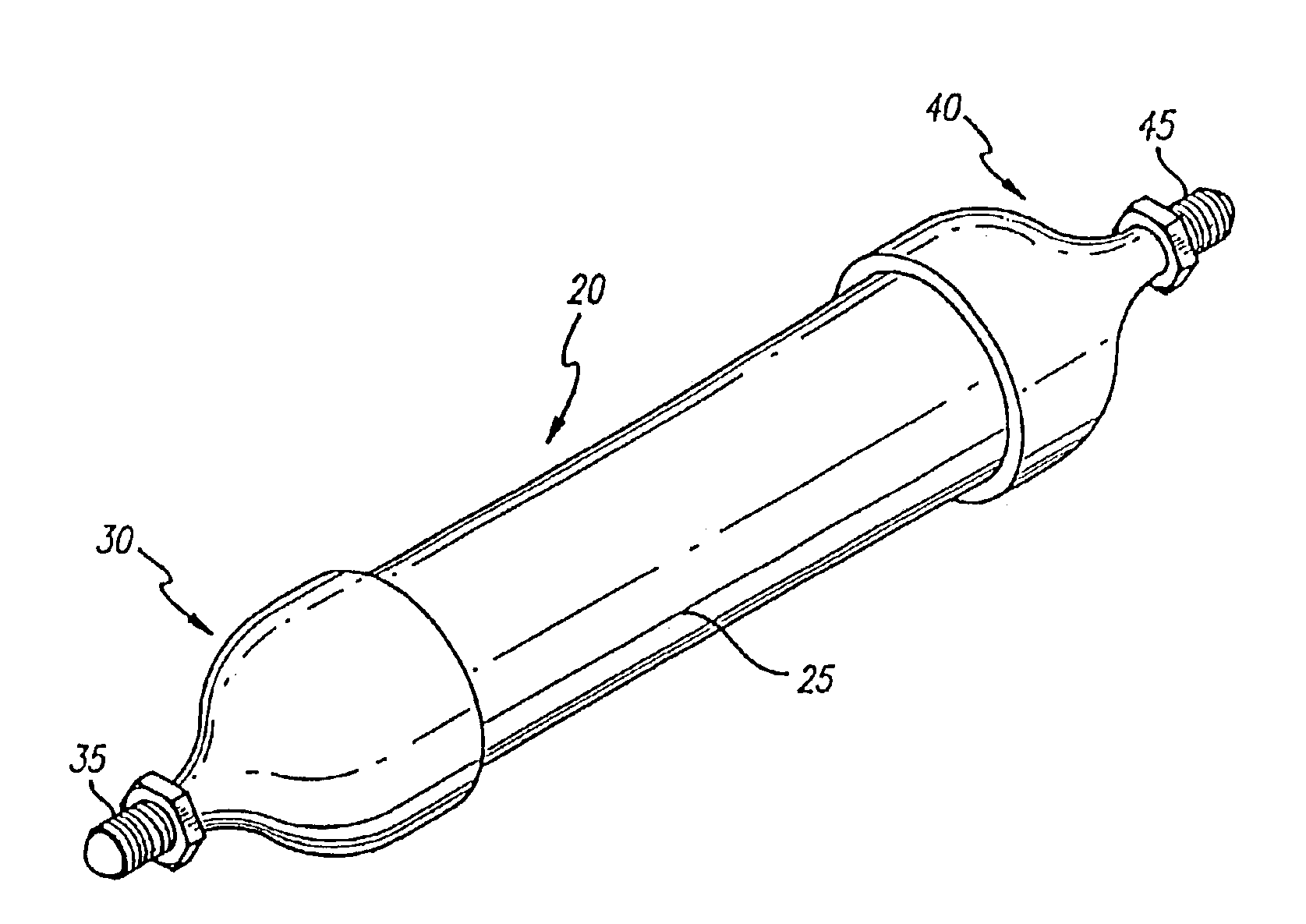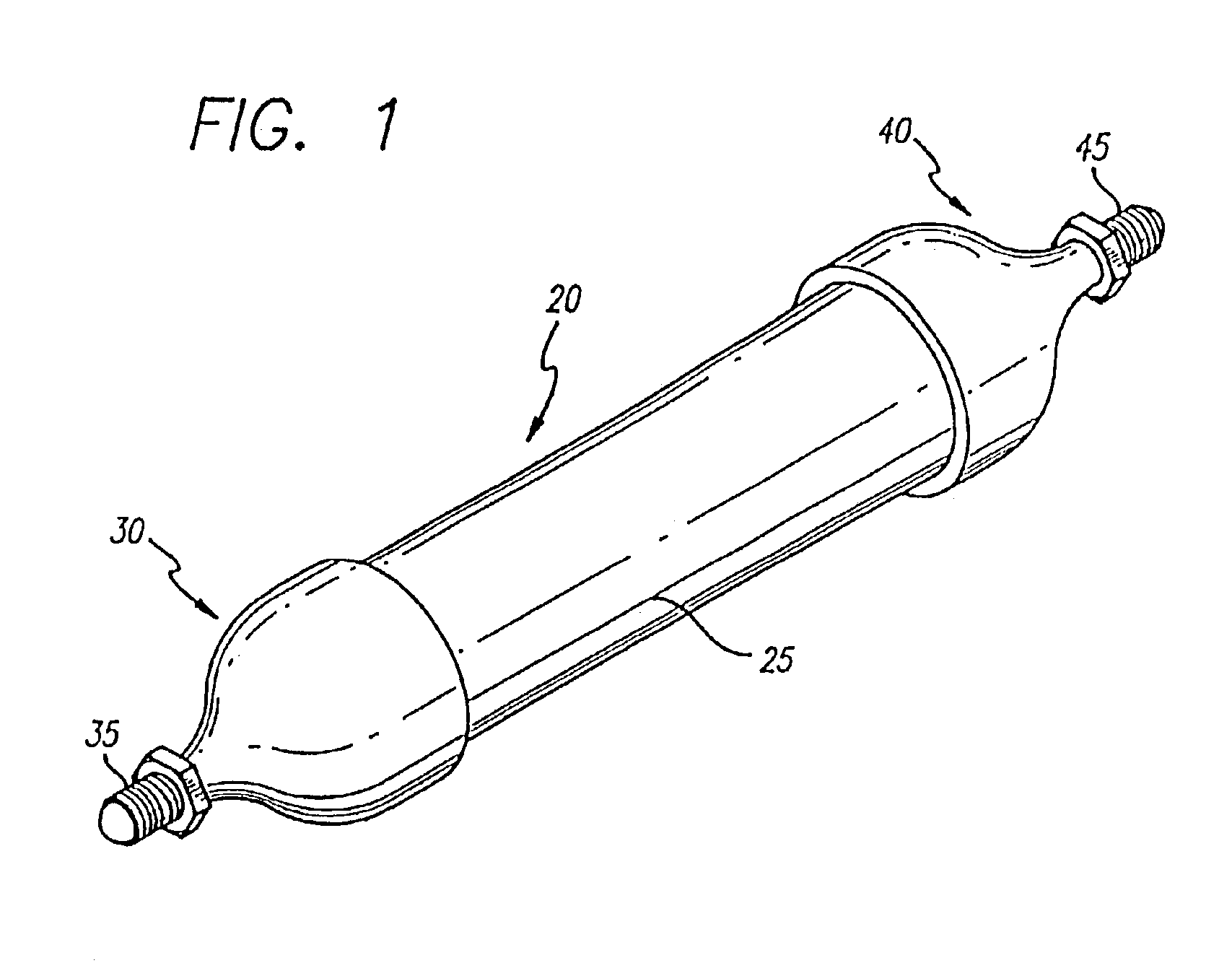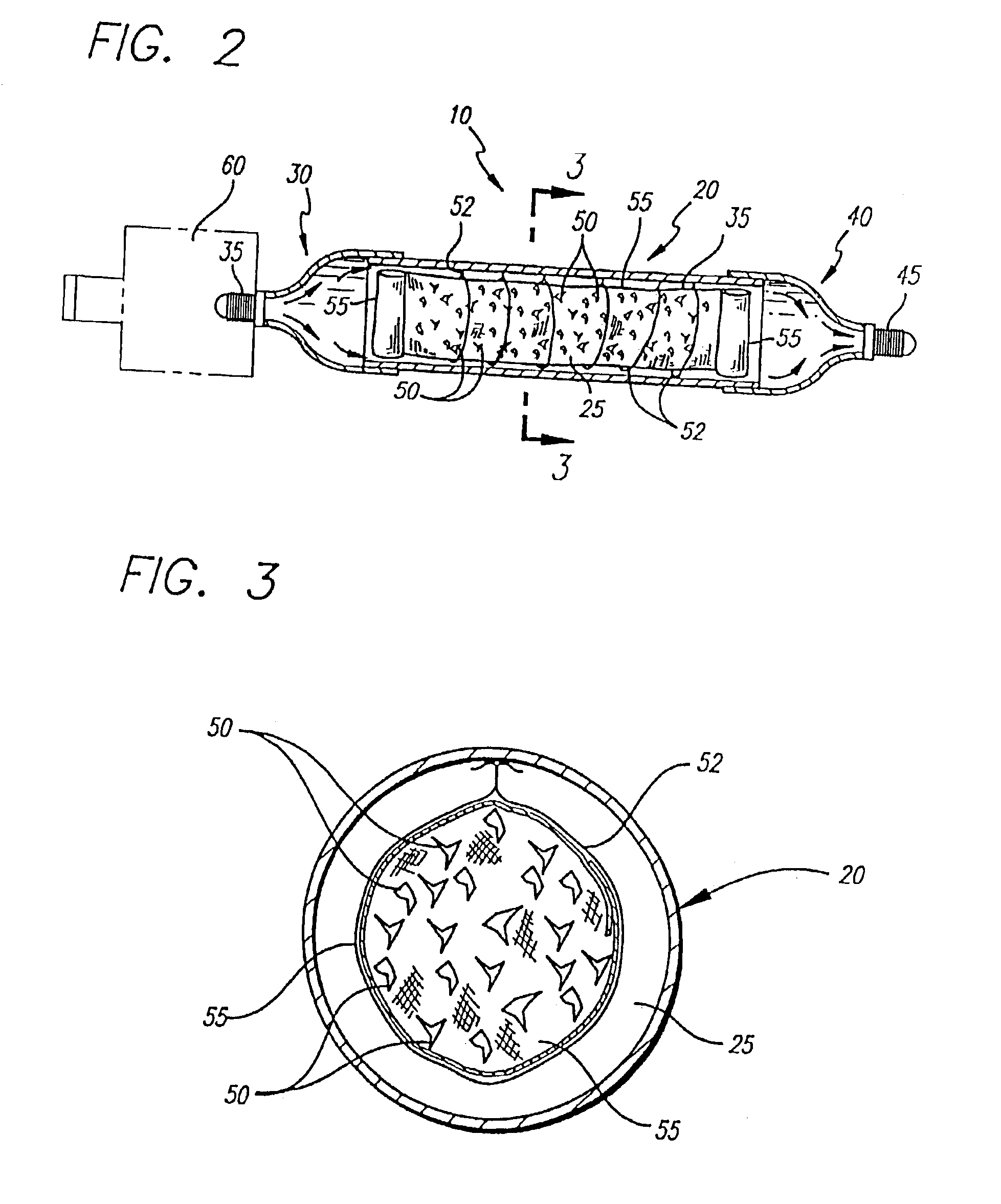Fuel conditioning assembly
- Summary
- Abstract
- Description
- Claims
- Application Information
AI Technical Summary
Benefits of technology
Problems solved by technology
Method used
Image
Examples
Embodiment Construction
[0026]Shown throughout the figures, the present invention is directed towards a fuel conditioning assembly, generally indicated as 10. The fuel conditioning assembly 10 is structured to be connected in line with an engine or other combustion based system's fuel system in order to effectively treat and condition the fuel prior to its combustion therein, thereby ensuring that a more effective, more efficient burn is achieved.
[0027]In particular, the fuel conditioning assembly 10 includes a housing 20, as shown in the figures. The housing 20, which includes an inlet end 30, an outlet end 40, is preferably rigid in construction, and includes a generally tubular configuration. The inlet and outlet ends 30 and 40 may be defined by separate elements fitted onto a main body, or a single cast element generally defining the entire housing 20 may be utilized. Moreover, extending from the inlet end 30 of the housing to its outlet end 40 is a flow through passage 25, as best shown in FIGS. 2 and...
PUM
 Login to View More
Login to View More Abstract
Description
Claims
Application Information
 Login to View More
Login to View More - R&D
- Intellectual Property
- Life Sciences
- Materials
- Tech Scout
- Unparalleled Data Quality
- Higher Quality Content
- 60% Fewer Hallucinations
Browse by: Latest US Patents, China's latest patents, Technical Efficacy Thesaurus, Application Domain, Technology Topic, Popular Technical Reports.
© 2025 PatSnap. All rights reserved.Legal|Privacy policy|Modern Slavery Act Transparency Statement|Sitemap|About US| Contact US: help@patsnap.com



